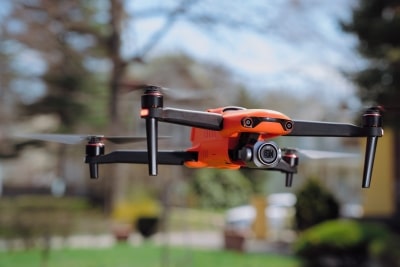Drones That Don’t Require a Phone

Drones that don’t require a phone are a great way to get some great aerial footage without having to pay a large sum of money. However, choosing one that suits your needs isn’t as easy as it sounds. Here are a few things to consider before you buy a drone.
Autel Robotics EVO II
Autel Robotics has introduced three new drones in its EVO II series. Each model is designed to meet a specific user need.
The new EVO II drones feature advanced Object Tracking capabilities, which enable smooth flight paths. They also offer multiple Smart Flight Modes. During flight, the EVO II will identify up to 64 objects.
The EVO II has an array of 19 sensors. It uses a unique dual band transmission system to enhance the user experience.
This drone also offers a unique 3-axis gimbal, which helps maintain camera stability in all weather conditions. The camera can record high-resolution 4K videos at 60fps. Unlike many other drones, the Evo does not require a smartphone to operate.
Tello
Tello is a fun little drone that is easy to operate and perfect for beginners. It’s also an excellent toy for researchers who want to get their feet wet in the world of drones.
Tello is made by Ryzerobotics. They are known for producing the best mini drones in the market. Their products are affordable and feature-packed. You don’t need a phone to fly Tello, although a Bluetooth controller will give you better range and flight control.
The Tello Drone has a number of features, including a downward facing camera and an altimeter. This enables it to perform awesome tricks.
It’s not waterproof, but it can be flown indoors. However, it isn’t recommended for use in rainy weather.
Hubsan H501S
Hubsan H501S drones are inexpensive, versatile and fun to fly. With the ability to take aerial photos and videos, this drone is ideal for casual users. Despite its affordability, the H501S is packed with features, including a 1080p camera and GPS.
It can also be controlled by a dedicated remote controller, which provides a variety of options. The controller has a 4.3-inch LCD screen and a 5.8-GHz video transmission. You can purchase an optional battery for additional flight time.
Depending on your needs, you can choose between the Zino Pro Plus, H501S X4, H502S, or H107c Plus. All of these have excellent features, although the Zino Pro Plus is the most balanced.
Holly Stone F181F
If you are interested in getting into drone flying, the Holly Stone F181F is a great drone to start with. This is a very affordable drone with a lot of features.
The camera on this drone is not the best on the market, but it is still capable of recording high quality video. It also has a built in GPS, which helps with positioning.
Aside from having a decent camera, this model has a wide angle lens, which helps with immersion. In addition, it has a 5.8Ghz FPV display. Although it is not the best, it’s a good start for beginners.
The controller is similar to the folding DJI Mavic 2 Pro controller. It’s designed with two palm handles, which makes it more comfortable for larger hands.
Potensic T25
The Potensic T25 is a sub-PS200 drone that’s perfect for beginners. It’s easy to fly and is great value. However, the drone’s range is limited, so if you want a bigger range, you’ll need to look elsewhere.
You’ll need a smartphone to fly it. There’s an app available for download that will allow you to control the drone via your phone.
One of the best features of the T25 is its ability to return to the launch point. It’s a simple, one-button press that gets the drone back to its starting point. This function is particularly useful if you run out of battery power.
DJI Air 2S
The DJI Air 2S is the first consumer drone to feature a 1-inch sensor. This larger sensor provides a wider field of view, which is helpful for spotting obstacles. It also captures 20-megapixel still images and can shoot up to 5.4K video.
DJI also has improved its safety features with the Air 2S. These include obstacle detection and collision avoidance. If the drone detects an obstacle in its path, it will automatically brake and return to home. Another new feature is the DJI Smart Controller. This controller features a 5.5-inch screen that displays live feeds from the drone. In addition, it supports third-party apps such as Facebook and DJI Fly.